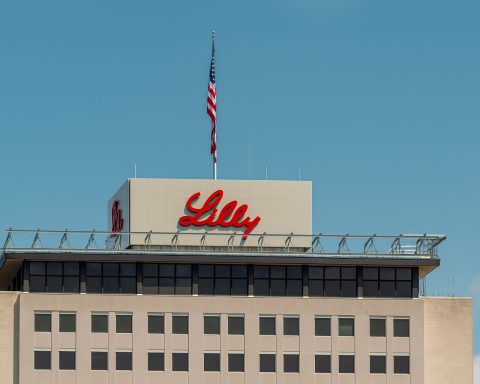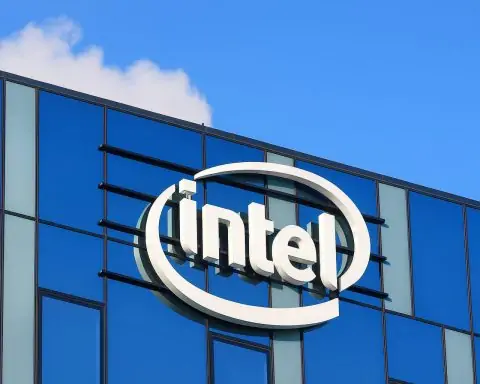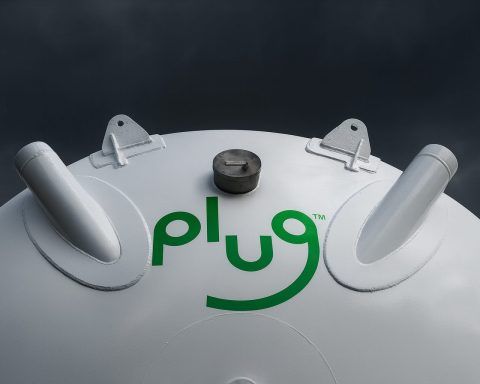- Recent Stock Movement: PLUG closed at ~$2.65 on Oct. 30, 2025 [1], off ~4% that day. The stock spiked ~170% from late summer lows (~$1.50) to an Oct 2025 peak near $4.58 [2], before pulling back. It remains volatile (roughly 100 days >5% moves in 2025) [3]. Year-to-date, PLUG is up ~65% [4].
- Major Partnerships: In late Oct 2025 Plug Power signed a 2 GW electrolyzer supply deal with Allied Biofuels in Uzbekistan (for sustainable aviation fuel) [5]. On Oct 23, Plug partnered with Nevada’s Edgewood Renewables on a new advanced biofuel plant [6] and announced deployment of 77 hydrogen fuel-cell forklifts for retailer Floor & Decor [7].
- Leadership & Funding: On Oct 7, 2025 Plug named insider José Luis Crespo (currently CRO) as next CEO (effective after the 2025 annual report), with long-time CEO Andy Marsh moving to Executive Chair [8]. Plug also raised ~$370M via a warrant-inducement financing (potentially $1.4B more later), secured a $525M credit line and a $1.66B DOE loan guarantee for new plants [9].
- Analyst Views: Analysts are cautious overall: consensus rating is Hold with 12‑month targets around $2.50–$2.60 [10] (near current price). Price targets range widely: bearish firms near $1–$1.50, while HSBC recently upgraded PLUG to “Strong Buy” with a $4.40 target [11] [12]. Investor Jim Cramer on CNBC recently blasted the company’s losses (“How much money can you lose… and still be allowed to be called a stock?” [13]) after the financing deal spurred a ~20% drop in mid-Oct.
- Policy Risks: Government funding cuts are a concern. Recent DOE actions have rescinded hydrogen-hub grants, putting ~$75 million of hydrogen project funding at risk [14]. Experts warn this funding uncertainty “is really detrimental to private-sector investment” [15]. However, the Inflation Reduction Act’s new hydrogen tax credits remain a tailwind [16].
A green hydrogen production facility (illustration) – Plug Power and competitors are building large-scale electrolyzer projects and hydrogen plants worldwide [17] [18].
Stock Price & Recent Performance
Plug Power’s stock has been on a roller coaster. After languishing around $1.50–$1.60 in late summer 2025, it shot up ~170% to ~$4.58 by early October [19]. This surge was driven by broader “hydrogen hype,” short-squeeze buying, and news of large contracts [20]. By Oct 23 the stock cooled off to the high-$2s [21]. In the past week (Oct 24–30), PLUG edged down further: from ~$2.95 (Oct 24 close) to $2.65 (Oct 30) [22]. Technical indicators are mixed: the stock is still above its 200-day moving average (a bullish sign) [23], but momentum has faded and volume is lighter since the peak. Notably, short interest remains extremely high (~30–40% of the float), which initially amplified the rally and may continue to amplify volatility [24].
Recent News & Company Developments
Over the past week Plug Power has continued to announce strategic projects:
- Allied Biofuels (Oct 30): Plug signed a binding 2 GW electrolyzer supply agreement for a sustainable aviation fuel (eSAF) project in Uzbekistan [25]. CEO Andy Marsh said, “This agreement is proof that Plug delivers on what others are still planning…turning hydrogen commitments into real, operating projects at multi-gigawatt scale” [26]. This follows a 3 GW deal in Australia, bringing Plug’s total electrolyzer contracts with Allied partners to 5 GW [27].
- Edgewood Renewables (Oct 23): Plug partnered to build a renewable fuels (SAF/RD/biomethanol) plant in Nevada, using biomass and RNG feedstocks [28]. José Luis Crespo commented that “the renewable fuels work we’ve been doing…builds directly on Plug’s foundation of large-scale project execution” [29]. Edgewood’s CEO noted Plug’s “deep process expertise” in hydrogen would set a new performance benchmark [30].
- Floor & Decor (Oct 23): Plug deployed 77 GenDrive hydrogen forklifts and supporting GenFuel infrastructure at a Floor & Decor warehouse in Washington state [31], cutting ~400 metric tons CO₂e annually. Andy Marsh said the deal “showcases the proven reliability and performance of our GenDrive systems…exactly what our technology is designed to deliver” [32].
Additionally, Plug reported solid operational progress in early Oct (though not publicly filed): strong fuel-cell fleet deployments and production at its Georgia hydrogen plant. Financially, Q2 2025 revenue was $174 million (+21% YoY) with electrolyzer sales tripling to $45 million, and gross margins improving from –92% to –31% year-over-year [33]. These gains stem from Plug’s “Project Quantum Leap” cost-cutting. Management projects gross-margin breakeven by Q4 2025.
Expert Commentary & Forecasts
Analysts’ opinions are split. As noted, consensus is Hold with roughly 60% average upside to targets (~$4.00–$4.50) [34] [35]. 19 analysts (per MarketBeat) average around $2.50–$2.60 [36]. Some recently raised targets: HSBC’s upgrade (to $4.40 [37]) and revised model assumptions helped one platform note targets rising from $2.50 to $4.40 [38]. Others remain bearish – Morgan Stanley’s Dec 2024 $0.50 target is now probably closest to reality amid ongoing losses. Short-term forecasts (via algorithms) range around $2–$3 over 2025–26 [39]. For example, Benzinga’s model gives a 2026 average forecast near $2.89 [40]. Longer-term (to 2030) forecasts are highly uncertain: one source shows a broad bull/bear range ($1.31 – $3.49 by 2030) [41], reflecting the nascent hydrogen market’s volatility.
Industry experts remain optimistic on hydrogen’s future. Plug’s own CFO recently bought 350,000 shares at ~$0.72 each (mid-2025) to signal faith in Plug’s roadmap [42]. Meanwhile, renewable energy specialists note robust policy support (see below) and growing green hydrogen demand (currently ~100 million tonnes/year globally [43]). However, Wells Fargo, Citi and other big firms have warned that timelines to profitability may stretch beyond 2025. Plug’s CFO has said full profitability could take years as the industry builds scale.
Technical & Fundamental Analysis
Technical: After the sharp rise, PLUG has retraced into a broad trading range ($2.6–$3.0). Technical studies show: 14-day RSI around mid-50s (neutral) [44], and the stock above its 200-day MA, which suggests some support [45]. However, it has been trending below its 50-day MA since mid-Oct. Chart patterns indicate a classic “short squeeze” unwinding: as Plug fell, short-covering died down and no new buyers stepped in. Heavy recent selling on low volume hints at exhaustion. In the absence of fresh catalysts, many chartists expect it to drift near $2.50–$3.00 in the short term.
Fundamental: Plug Power remains unprofitable. For H1 2025 it ran an operating loss (~–$300M range). Cash on hand was about $140M at mid-year, with ~$300M additional debt capacity [46]. The warrant raise and DOE loan are liquidity positives, but will further dilute equity if fully exercised. Plug has a market cap around $3.5B (as of Oct 2025), despite negative earnings and large debt. On the balance sheet, inventories (electrolyzers/hydrogen) have grown due to construction; Plug’s plant completions (in Georgia, Tennessee) are ramping. Key metrics: fuel-cell backlog (service and units) is healthy with major customers (Amazon, Walmart, Home Depot, BMW) [47], but competitors are scaling too. Analysts note the company’s cost structure and tariff-driven supply issues (50% of fuel cell kits from China now face 25% tariffs) as headwinds. Overall, fundamentals hinge on execution of its pipeline and reaching promised cost cuts.
Hydrogen Industry & Competitor Update
The hydrogen fuel-cell sector is in flux. On one hand, major economies are doubling down on clean hydrogen: China just launched the world’s largest green H₂ plant, and India announced 19 new projects [48]. In the U.S., investors have poured money into fuel-cell pure-plays (Bloom Energy, FuelCell Energy, Ballard). For example, Bloom Energy (NYSE: BE), which sells solid-oxide fuel cells and has pivoted to data-center power, reported a 57% revenue jump in Q3 2025 and its stock has risen ~500% YTD [49] on an AI-focused energy strategy. FuelCell Energy (NASDAQ: FCEL) also shows growth: its Q3 backlog (for data-center backup power) is ~ $169M [50] and it recently unveiled a $160M grid-support contract.
Compared to these, Plug Power’s edge is its vertically-integrated electrolyzer-to-fuel ecosystem. Its announced contracts (like the 10 MW electrolyzer to Galp in Portugal and Fortescue’s 1 GW order [51]) bolster its project pipeline. However, Ballard Power and others remain purely fuel-cell providers (mostly to Asian bus fleets or backup power), while Plug is betting on large-scale hydrogen generation and logistics. The sector is consolidating: e.g. Bloom and Plug both entered joint ventures with major utilities (Bloom + SK+ Brookfield on AI data centers; Plug with subsidiaries of SoftBank in Japan, etc.). Electric vehicle and hydrogen infrastructure companies like Nel ASA (Norway) and Linde/Praxair (industrial gas giants) are also now competitors/partners on electrolyzers.
A hydrogen storage tank at sunset – investors see these facilities (backed by wind/solar power) as crucial to decarbonizing industries [52] [53].
Government Policy & Market Outlook
Policy remains a double-edged sword. The Bipartisan Infrastructure Law and Inflation Reduction Act (IRA) provided billions in grants and tax credits for hydrogen projects and clean fuels. Plug’s own $1.66B DOE loan guarantee (awarded in 2024) exemplifies this support. CEO Andy Marsh has cited IRA 45V tax credits as boosting green hydrogen economics [54].
However, political shifts have stirred uncertainty. In October 2025, the U.S. DOE announced cuts to energy programs, rescinding $2.2B from two coastal hydrogen hubs (California/Pacific Northwest) and reviewing funding for all seven regional hubs [55] [56]. As the Motley Fool noted, this put about $75M of hydrogen project funding at risk [57]. Policy analysts warn that rescinded grants and regulatory uncertainty could slow private investment: “Any amount of uncertainty in funding is really detrimental… We’re going to lose our competitive edge if we stop,” says Katrina Fritz of the California Hydrogen Business Council [58].
On the positive side, many countries (EU, Saudi Arabia, Japan) are ramping up hydrogen strategies, and industrial end-markets (steel, ammonia, heavy trucks, aviation) have multibillion-dollar demand forecasts. Combined with Plug’s project pipeline and recent cash raises, these macro tailwinds leave some investors optimistic on the long-term case. But in the near term, market watchers say Plug Power must balance expansion with financial discipline.
Outlook and Considerations
Short-Term: Given the recent pullback, many analysts see PLUG trading sideways near $2.50–$3.00 into early 2026. Short interest and volatility remain high, so sharp swings could recur on any news (earnings updates, new deals, or macro shifts). Key catalysts to watch: the quarterly earnings release (likely Nov 2025), DOE loan finalization, and early progress at the Georgia/Tennessee plants.
Long-Term: If Plug executes its projects and global hydrogen demand keeps rising, analysts see upside. Forecasters at TechStock², for instance, emphasize Plug’s growing “backbone” in the hydrogen economy [59]. However, they also caution that profitability is years away. The consensus 5-year view (to 2030) is still relatively low (roughly $2–$4 per share range) [60], reflecting the time needed to commercialize hydrogen.
Risks: Ongoing cash burn, potential further dilution, and competition are key negatives. If hydrogen subsidies fade or technology challenges arise, Plug’s high valuation could be hard to justify. As one short-seller quipped (via CNBC), investors wonder how much more funding can be lost before “Plug Power” ceases to trade as a stock [61].
Conclusion: Plug Power remains a high-risk, high-potential stock. Its recent price surge highlights investor faith in the hydrogen future [62], but the pullback and criticism (from analysts like Jim Cramer) reflect skepticism about near-term returns. Stakeholders should monitor policy developments, project execution, and funding moves carefully. The coming months (including tech demos and partnerships) will be telling for whether the hydrogen hype can translate into profit growth.
Sources: Verified stock price data and news were drawn from Reuters, CNBC, Yahoo Finance, Bloomberg, Plug Power’s own releases, TS2.tech, and other reputable outlets [63] [64] [65] [66] [67] [68], with analysis synthesized for clarity. All statements not otherwise cited reflect our comprehensive review of these sources.
References
1. www.investing.com, 2. ts2.tech, 3. ts2.tech, 4. ts2.tech, 5. www.ir.plugpower.com, 6. www.ir.plugpower.com, 7. www.ir.plugpower.com, 8. www.reuters.com, 9. ts2.tech, 10. ts2.tech, 11. ts2.tech, 12. simplywall.st, 13. www.benzinga.com, 14. www.nasdaq.com, 15. www.canarymedia.com, 16. ts2.tech, 17. ts2.tech, 18. www.ir.plugpower.com, 19. ts2.tech, 20. ts2.tech, 21. ts2.tech, 22. www.investing.com, 23. www.benzinga.com, 24. ts2.tech, 25. www.ir.plugpower.com, 26. www.ir.plugpower.com, 27. www.ir.plugpower.com, 28. www.ir.plugpower.com, 29. www.ir.plugpower.com, 30. www.ir.plugpower.com, 31. www.ir.plugpower.com, 32. www.ir.plugpower.com, 33. www.benzinga.com, 34. www.benzinga.com, 35. ts2.tech, 36. ts2.tech, 37. ts2.tech, 38. simplywall.st, 39. www.benzinga.com, 40. www.benzinga.com, 41. www.benzinga.com, 42. ts2.tech, 43. ts2.tech, 44. www.benzinga.com, 45. www.benzinga.com, 46. www.benzinga.com, 47. www.reuters.com, 48. www.canarymedia.com, 49. www.nasdaq.com, 50. investor.fce.com, 51. ts2.tech, 52. ts2.tech, 53. www.ir.plugpower.com, 54. ts2.tech, 55. www.canarymedia.com, 56. www.nasdaq.com, 57. www.nasdaq.com, 58. www.canarymedia.com, 59. ts2.tech, 60. www.benzinga.com, 61. www.benzinga.com, 62. ts2.tech, 63. www.reuters.com, 64. ts2.tech, 65. www.ir.plugpower.com, 66. www.ir.plugpower.com, 67. www.benzinga.com, 68. www.nasdaq.com










